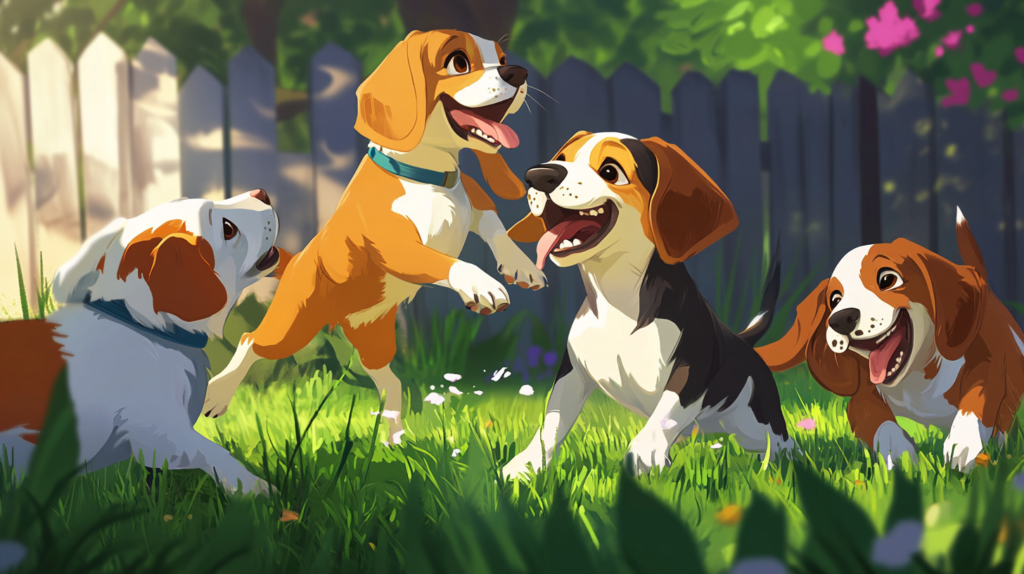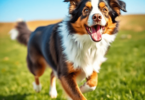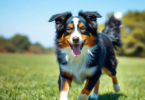Training Your Beagle: A Comprehensive Guide
Beagles are known for their friendly and curious nature, making them one of the most beloved dog breeds. Their keen sense of smell and energetic personality can sometimes be a handful, but with effective training, these traits can become their greatest assets.
Why is training your Beagle so important?
- Behavior Management: Proper training helps manage their instinctual behaviors, like tracking scents.
- Safety: Teaching commands ensures they respond promptly in potentially dangerous situations.
- Bonding: Training sessions are perfect opportunities to build a strong bond with your furry friend.
In this article, you’ll discover:
- How to start training early
- Crate training essentials
- Establishing a consistent potty schedule
- Teaching basic commands
- Leash training techniques
- The importance of socialization
- Implementing positive reinforcement
- Establishing a routine
- Addressing common behavioral issues
- Advanced training techniques
Let’s dive in on how to turn Beagles into the best-behaved fur babies on the block!
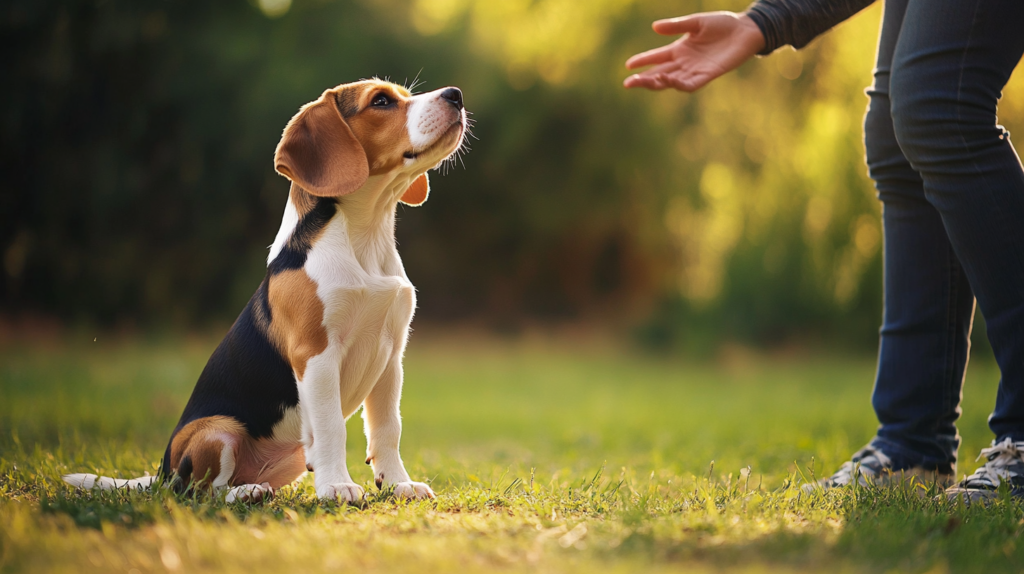
1. Start Training Early
Training a Beagle puppy at 7-8 weeks old is the best time to teach them good behavior and set the stage for lifelong learning.
Benefits of Early Socialization
Early socialization with other dogs and people is crucial. It helps your Beagle puppy become well-adjusted and confident in various environments.
- Social Skills: Puppies learn essential social cues from interacting with other dogs.
- Confidence Building: Exposure to different people reduces fear and anxiety.
Long-term Behavior Retention
A well-trained Beagle at an early age retains good behavior throughout its life.
Pro Tip: Consistent training sessions, even brief ones, make a world of difference in long-term retention.
Training early leads to an obedient, happy Beagle who’s a joy to be around.
2. Crate Training Essentials
Mastering crate training is a game-changer for Beagle owners. This technique is crucial for reducing anxiety and establishing a safe, personal space for your furry friend.
Purpose of Crate Training for Beagles
Crate training helps:
- Reduce anxiety: It provides a secure environment when you’re not home.
- Assist in housebreaking: Dogs naturally avoid soiling their sleeping area.
- Prevent destructive behavior: Keeps them away from potential hazards when unsupervised.
How to Introduce the Crate Effectively
Introducing the crate can be a breeze with these steps:
- Make it inviting: Place soft bedding and a favorite toy inside.
- Start slow: Encourage your Beagle to explore the crate with the door open.
- Use treats: Reward them for entering and staying inside.
Tips for Making the Crate a Safe Space
Transform the crate into a cozy haven by:
- Maintaining comfort: Ensure it’s well-padded and free from drafts.
- Adding familiarity: Include items that smell like you or their favorite blanket.
- Keeping it positive: Never use the crate as punishment; it should be associated with positive experiences.
By adhering to these Beagle training tips, you’ll foster an environment where your pup feels secure and comfortable, setting the stage for successful training sessions.
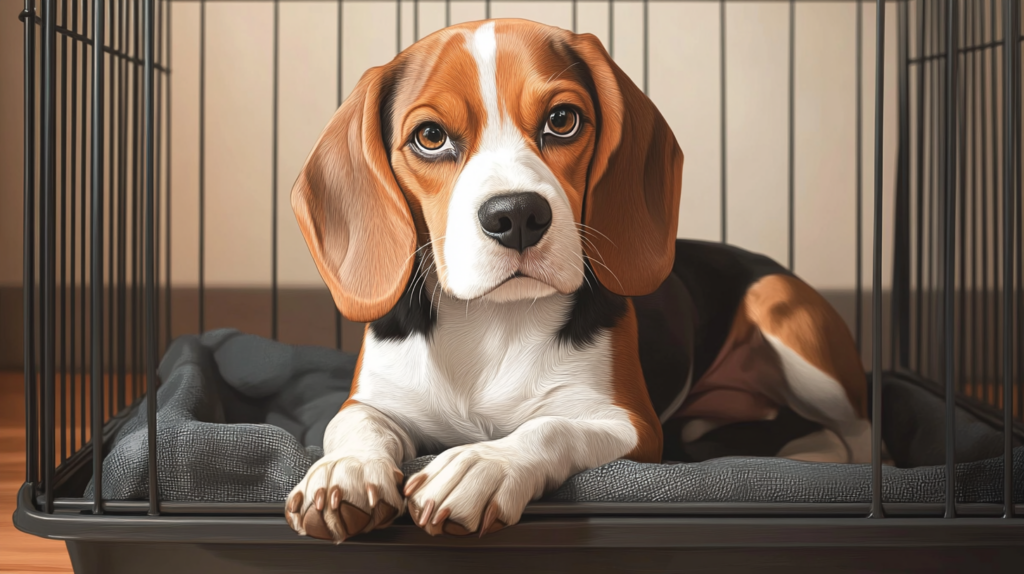
3. Establishing a Consistent Potty Schedule
Creating a consistent potty-training schedule is essential for successfully housebreaking your Beagle. These pups thrive on routine, making it vital to establish regular bathroom breaks.
Importance of a Routine for Bathroom Breaks
Beagles are creatures of habit. By taking them out at the same times each day, you help them understand when and where it’s appropriate to go. This consistency reduces accidents and reinforces good habits.
Techniques for Rewarding Successful Potty Behavior
Positive reinforcement works wonders! When your Beagle uses the designated potty area, shower them with praise or give them a treat. This creates a positive association with the act, encouraging them to repeat it.
- Praise: A simple “Good boy/girl!” can be incredibly motivating.
- Treats: Small, tasty rewards can reinforce the behavior you want to see.
Troubleshooting Common Potty-Training Challenges
Accidents happen. If your Beagle has an accident indoors, avoid scolding. Instead, clean up immediately and take them outside to the designated area. Patience and consistency are key.
- Monitor Signs: Look for signs that they need to go, such as sniffing around or circling.
- Frequent Breaks: Especially during the initial stages, take your Beagle out frequently to reduce the chance of indoor accidents.
By establishing a consistent potty-training schedule, rewarding successful behavior, and troubleshooting common challenges with patience, you’ll guide your Beagle towards becoming a well-trained member of the family!
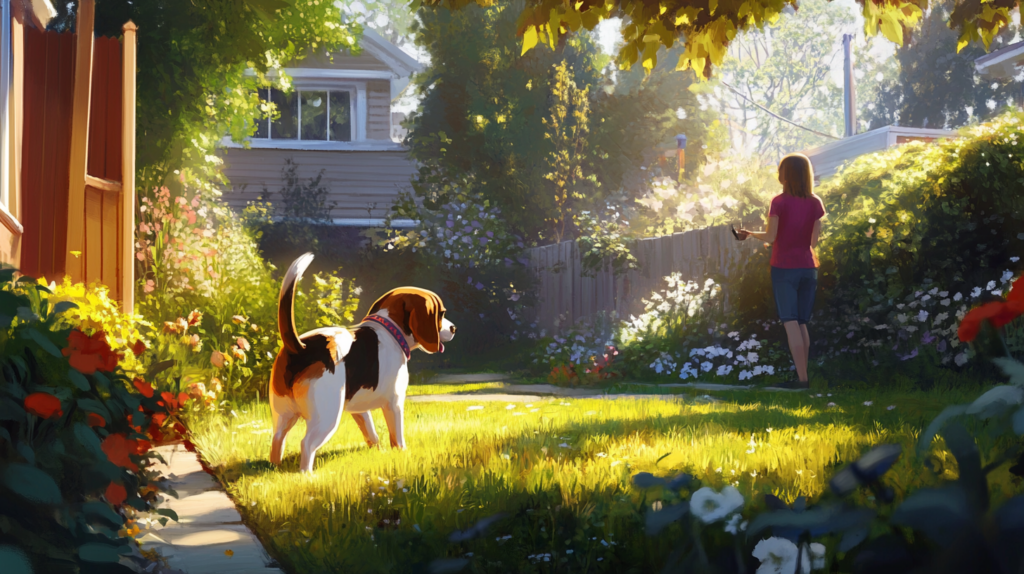
4. Teaching Basic Commands
Understanding Beagle Learning Style:
Beagles are a breed with a zest for life and an insatiable curiosity, especially when it comes to following their noses. This means that while they are intelligent and capable learners, they also have a tendency to get distracted easily. Understanding their learning style is crucial for successful obedience training.
Beagles thrive on consistency and repetition. They benefit from clear, concise commands delivered in a calm and assertive tone. Since Beagles were originally bred as hunting dogs, they have an innate drive to explore and follow scents, which can sometimes make them seem stubborn or uninterested in training sessions. Patience and persistence are key.
Basic Commands Every Beagle Should Know
Teaching basic commands not only helps ensure your Beagle’s safety but also strengthens the bond between you and your furry friend. Here are some fundamental commands to start with:
Sit:
- Hold a treat close to your Beagle’s nose.
- Move your hand up, allowing their head to follow the treat and causing their bottom to lower.
- Once they’re in the sitting position, say “Sit,” give them the treat, and share some praise.
Stay:
- Start with your Beagle in the sitting position.
- Open your palm in front of you and say “Stay.”
- Take a few steps back.
- If they stay put, reward them with a treat and praise. Gradually increase the distance over time.
Come:
- Attach a leash to your Beagle’s collar.
- Say “Come” while gently pulling on the leash.
- When they reach you, reward them with a treat and affection.
Training Tools and Resources
Utilizing the right tools can make training more effective:
- Clicker: A clicker helps mark desired behaviors with precision. Pairing the sound of the clicker with treats makes it easier for your Beagle to understand what is expected.
- Treats: Small, soft treats work best as they can be quickly consumed without causing distractions during training sessions.
- Harness or Collar: Choosing the right harness or collar ensures better control during walks and training exercises.
Tips for Effective Command Training
Keep Sessions Short: Aim for 5-10 minute sessions twice daily to maintain your Beagle’s interest without overwhelming them.
Use Positive Reinforcement: Reward-based training has been proven to be highly effective for Beagles. Praise, treats, or even playtime can serve as excellent motivators.
Avoid Punishment: Negative reinforcement or punishment can lead to fear or aggression. Always focus on positive interactions.
By incorporating these strategies into your Beagle’s routine, you’ll lay a solid foundation for good behavior and help manage their natural instincts effectively.
The journey of teaching basic commands is both rewarding and essential in building trust and communication with your spirited companion!
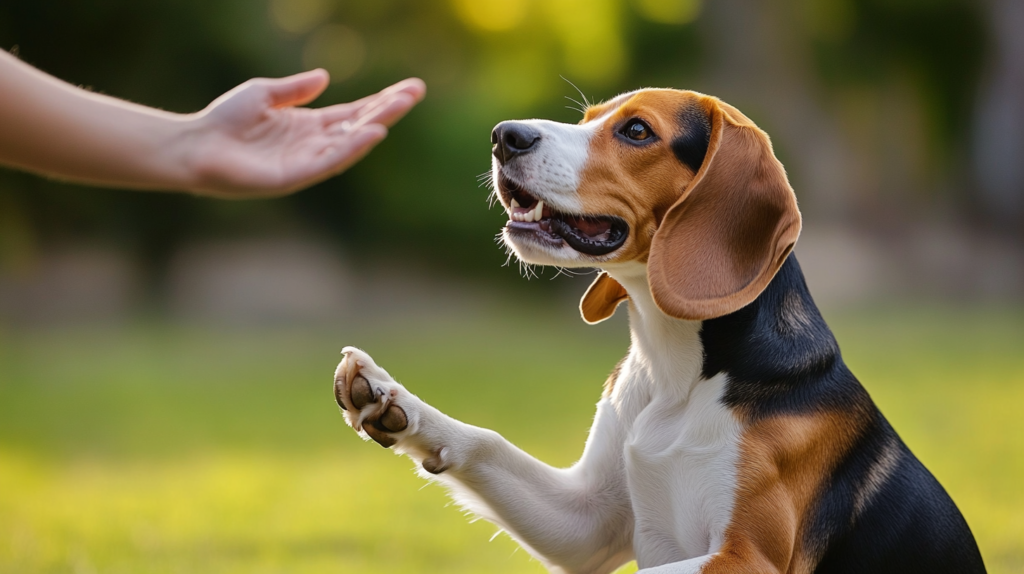
Training Tools and Resources
When it comes to training your Beagle, having the right tools can make a world of difference. Here are some essential items that will help you and your furry friend succeed:
Recommended Commands to Start With:
- Sit: A foundational command that helps with impulse control.
- Stay: Crucial for safety, especially in busy environments.
- Come: Vital for recall, ensuring your Beagle returns to you.
- Leave It: Prevents your Beagle from picking up unwanted items.
Best Practices for Short and Effective Training Sessions:
- Keep it Brief: Aim for 5-10 minute sessions. Beagles have a short attention span, so frequent, short bursts of training work best.
- Consistency is Key: Use the same commands and gestures every time. Your Beagle will learn faster when there’s no confusion.
- End on a High Note: Always finish a session with a successful command and lots of praise. This keeps your Beagle eager for the next session.
Reinforcement Techniques Using Treats and Praise:
- Treats: Opt for small, soft treats that are easy to chew and quick to eat. High-value treats (like pieces of chicken or cheese) are great motivators.
- Praise: Combine treats with enthusiastic verbal praise like “Good job!” or “Well done!” This reinforces positive behavior effectively.
- Clicker Training: A clicker can be used to mark desired behaviors precisely when they happen, followed by a treat or praise. This method helps bridge the gap between action and reward.
Having these tools at your disposal not only enhances training effectiveness but also makes the whole process enjoyable for both you and your Beagle!
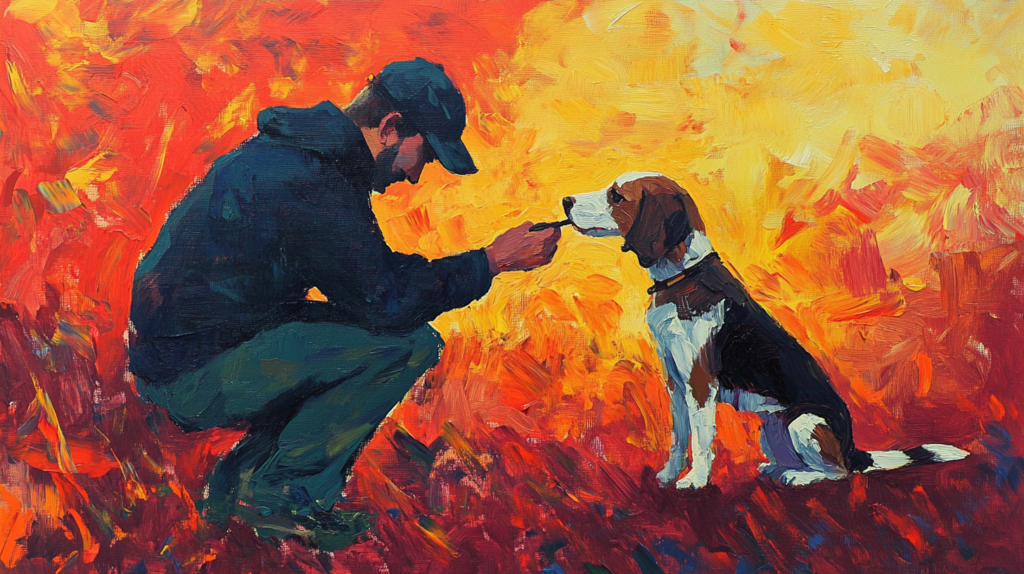
5. Leash Training Techniques
Why early leash training is crucial for Beagles
Leash training from a young age sets the stage for future outdoor adventures. Beagles, with their boundless energy and keen sense of smell, can be a handful if not properly trained on a leash. Starting early helps them understand boundaries and reduces the risk of pulling or darting off after intriguing scents.
Strategies to manage distractions from scents and sounds during walks
Beagles are renowned for their incredible noses, which means they can be easily distracted by even the faintest whiff of something interesting. Here are some strategies to keep your walks pleasant:
- Use high-value treats: Keep their attention on you with yummy rewards.
- Practice in low-distraction areas first: Gradually introduce more challenging environments.
- Incorporate short training sessions: Use commands like “focus” or “watch me” to redirect their attention.
Choosing the right collar and lead for effective control
Selecting the right gear can make all the difference in leash training:
- Harnesses over collars: A harness distributes pressure more evenly, making it easier to control your Beagle without causing harm.
- Adjustable leads: Opt for leads that allow flexibility—shorter for training, longer for exploration.
- Comfortable materials: Ensure that whatever you choose is comfortable, to encourage positive associations with being on a leash.
Happy walking! 🐾
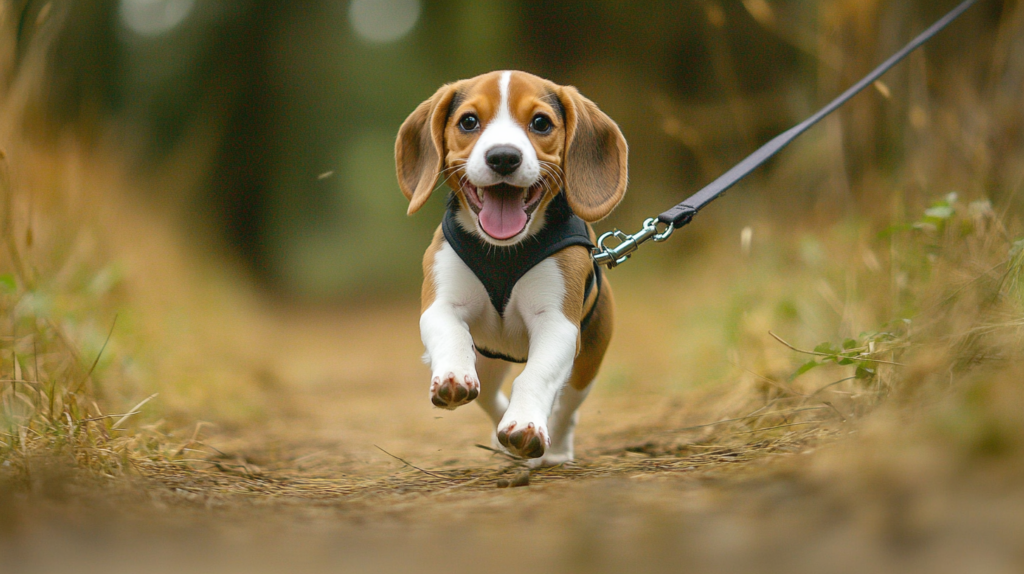
6. The Importance of Socialization
Socializing your Beagle is like giving them a golden ticket to becoming well-adjusted adults. Engaging in socialization exercises helps your furry friend adapt to different environments and situations effortlessly.
Activities for Socialization
Here are some activities you can do to socialize your Beagle:
- Car Rides: Take your Beagle on car rides to get them accustomed to the motion and new sights.
- Park Visits: Regular trips to the park expose them to other dogs and people, boosting their confidence.
- Meeting New People: Invite friends over or take your Beagle on walks where they can encounter various individuals.
Signs of Successful Socialization
A well-socialized Beagle will:
- Remain Calm: They won’t get overly excited or anxious in new settings.
- Interact Positively: They’ll be friendly and playful with other dogs and humans.
- Adapt Quickly: New experiences won’t faze them; they’ll adjust smoothly.
Impact on Overall Behavior
Proper socialization leads to:
- Reduced Anxiety: Familiarity with different scenarios reduces stress levels.
- Better Manners: A well-socialized Beagle is less likely to exhibit aggressive or fearful behaviors.
- Enhanced Learning: Exposure to varied environments improves their overall learning capacity.
7. Implementing Positive Reinforcement
Positive reinforcement training turns Beagles into eager learners by making lessons fun and rewarding. Imagine your Beagle happily wagging its tail, knowing a treat or praise is coming its way!
Benefits of Using Treats and Praise
- Motivates Learning: When Beagles receive treats or verbal praise, they’re more likely to repeat good behavior.
- Builds Trust: Positive interactions strengthen the bond between you and your furry friend.
- Reduces Anxiety: Rewards can help ease training stress, making sessions enjoyable.
How Positive Reinforcement Leads to Faster Learning
Beagles quickly associate actions with rewards. If they sit on command and get a tasty treat, they’ll remember that sitting leads to something delightful. This method accelerates learning because it aligns with their natural tendencies.
Examples of Desirable Behaviors to Reward
- Sitting on Command: A classic starting point for obedience.
- Coming When Called: Essential for safety.
- Gentle Play: Encouraging calm interactions with people and other dogs.
Using positive reinforcement creates an atmosphere where your Beagle feels excited to learn and perform. Who knew training could be such a treat?
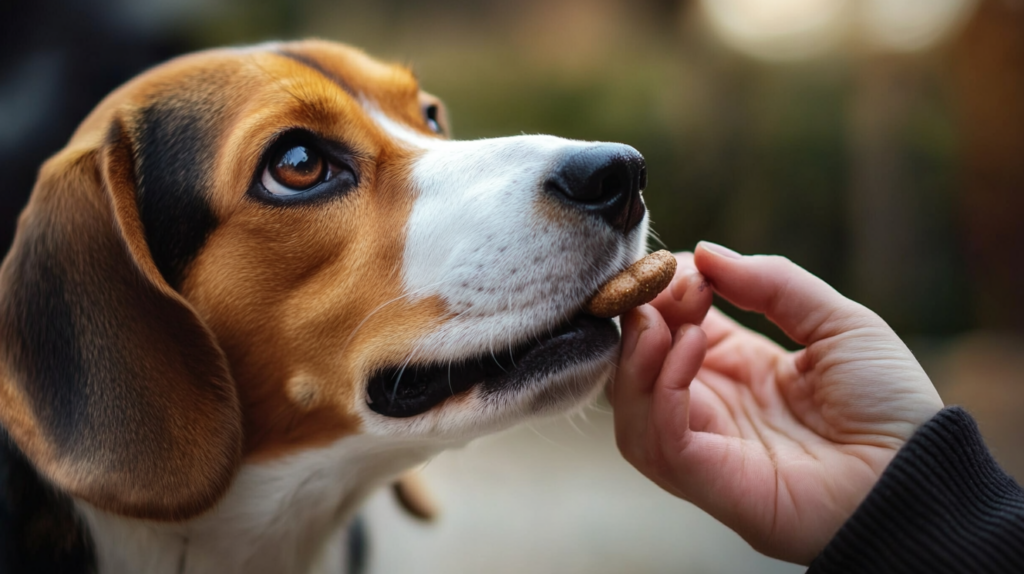
8. Establishing a Routine
A well-structured routine is the secret sauce to a happy Beagle. Consistency in feeding and exercise schedules plays a critical role in maintaining mental stimulation and behavioral balance for these energetic pups.
Routine Establishment Tips:
- Feeding Schedule: Serve meals at the same times each day to regulate their digestive system.
- Exercise Routine: Regular exercise sessions at fixed times help burn off excess energy, reducing the likelihood of destructive behavior.
- Training Time: Dedicate specific times for training to reinforce learning and create a sense of predictability.
Consistency is key. An inconsistent routine can lead to behavioral issues such as anxiety, over-excitement, or even aggression. A Beagle that knows what to expect is generally calmer and more obedient, making your training sessions far more effective.
“Routine breeds confidence and security in your Beagle, setting the stage for successful training.”
9. Addressing Common Behavioral Issues
Beagles are bundles of energy and curiosity, which sometimes translates into some pesky behavioral issues.
Identifying Causes Behind Unwanted Behaviors
Understanding why your Beagle is howling or chewing up your favorite shoes is the first step.
- Howling: Often a sign of boredom, loneliness, or separation anxiety.
- Chewing: Could indicate teething in puppies or insufficient mental stimulation in adults.
Techniques to Teach Commands Like “Hush” Effectively
Teaching your Beagle to be quiet when needed can save you from many headaches, especially during important moments like a Zoom meeting or conference call. If you’re struggling with this, you might find these tips helpful:
- Catch Them in the Act: Calmly say “hush” while they are howling.
- Reward Silence: The moment they stop, reward them with a treat or praise.
- Consistency: Practice this regularly to reinforce the behavior.
Crate Training Troubleshooting
Crate training can be an effective way to manage your Beagle’s behavior, but it doesn’t always go smoothly. Here are some common crate training troubleshooting tips that might help.
When to Seek Professional Assistance
If you’ve tried everything and your Beagle is still driving you up the wall:
- Professional Trainers: Experts can offer advanced techniques and personalized plans.
- Behaviorists: If the issue stems from deeper psychological problems, a certified animal behaviorist might be necessary.
By addressing these common behavioral issues, you’ll be well on your way to having a happy and well-adjusted Beagle!
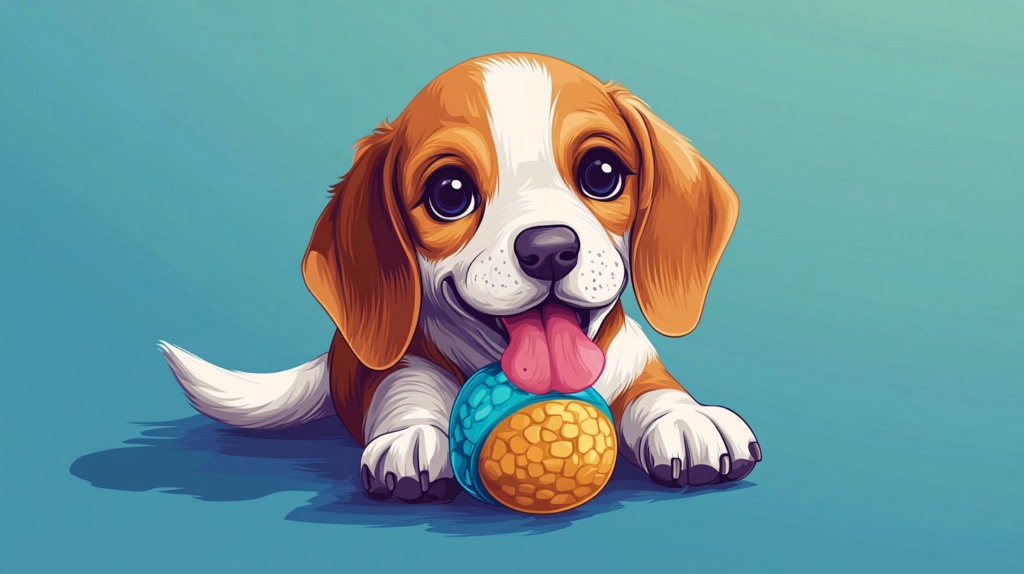
10. Advanced Training Techniques
Ready to take your Beagle training up a notch? Let’s dive into the world of advanced commands and techniques that will turn your furry friend into the superstar of the dog park!
Mastering Advanced Commands
Once your Beagle has got the basics like “sit” and “stay” down pat, you can move on to more complex commands. Some fun and useful advanced commands to teach include:
- Recall (“Come”): This is essential for off-leash playtime. Start in a low-distraction environment and gradually increase the difficulty.
- Heel: Perfect for those walks where you need your Beagle to stay close by your side.
- Leave It: Great for when your nosey pup finds something they shouldn’t.
- Place: Teaches your Beagle to go to a specific spot and stay there until released.
Patience is key here. Beagles are known for their independent streaks, so celebrate small victories and keep training sessions fun.
The Role of Professional Trainers
Sometimes, it’s best to call in reinforcements. Professional trainers have the experience and tools to teach complex skills or correct specific behaviors. They can:
- Tailor training strategies specifically for your Beagle’s temperament.
- Help with issues that require a deeper understanding, such as severe separation anxiety or aggression.
- Offer group classes for socialization or one-on-one sessions for personalized attention.
Investing in professional help can make a world of difference, especially if you’re hitting roadblocks in your training journey.
Scent Training and Games
Beagles have an exceptional sense of smell, originally bred for hunting hare. Harnessing this natural ability through scent training can be both exciting and mentally stimulating for them. Here’s how you can get started:
- Find It Game: Hide treats around the house or yard and encourage your Beagle to find them using their nose.
- Scent Trails: Lay down a scent trail using a favorite toy dragged along the ground, leading to a hidden treat or toy at the end.
- Nose Work Classes: Enroll in classes designed specifically for scent detection work. These classes often simulate real-world search scenarios.
Scent training not only taps into their natural instincts but also provides excellent mental exercise, preventing boredom-induced behaviors.
By mastering these advanced techniques, you’ll not only have a well-behaved Beagle but also strengthen the bond between you two, making every moment together more enjoyable!

Conclusion
Training a Beagle may require patience and consistency, but the rewards are worth it. By sticking to a well-planned Beagle training schedule and using effective Beagle training techniques, you’ll foster a strong bond with your furry friend. Embrace each step of the journey, from basic Beagle obedience training to more advanced Beagle scent training. The effort you put into understanding and guiding your Beagle’s behavior will pay off in countless ways, leading to a happy, well-adjusted companion. Remember, every moment spent in Beagle behavior training is an investment in a lifetime of loyalty and fun.
FAQs (Frequently Asked Questions)
What is the best age to start training a Beagle puppy?
The best age to start training a Beagle puppy is around 7-8 weeks old. Early training helps in establishing good behavior patterns and aids in long-term behavior retention.
Why is crate training important for Beagles?
Crate training is essential for Beagles as it provides them with a safe space, reduces anxiety, and helps with housebreaking. Introducing the crate effectively can make it a positive experience for your Beagle.
How can I establish a consistent potty schedule for my Beagle?
Establishing a consistent potty schedule involves setting routine bathroom breaks and designating specific areas for your Beagle. Rewarding successful potty behavior and addressing common challenges are also key components.
What basic commands should I teach my Beagle first?
Recommended basic commands to start with include ‘sit’ and ‘stay.’ It’s important to use short and effective training sessions while employing reinforcement techniques like treats and praise.
How can I manage distractions during leash training?
To manage distractions during leash training, it’s crucial to start early and choose the right collar and lead. Strategies include redirecting your Beagle’s focus away from scents and sounds that may distract them.
What are some signs of successful socialization in Beagles?
Signs of successful socialization in Beagles include their comfort in various environments, calmness around other dogs and people, and overall well-adjusted behavior. Engaging them in different activities like car rides or park visits can enhance their social skills.

